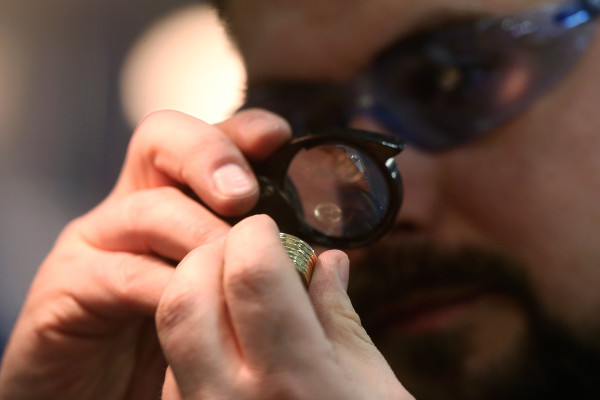
How to spot a good investment trust

There exist several different types of investment vehicles through which clients can invest, such as open-ended funds, exchange-traded funds, passive funds and investment trusts.
While thousands of these types of funds are available to investors, there are only about 400 investment trusts, says Melissa Gallagher, co-head of investment trusts at BlackRock.
This means investment trusts need to stand out to get noticed, she reasons.
And while all investment trusts offer a number of special features that other types of funds cannot, a good investment trust utilises its natural advantages with a clear investment objective and strategy, consistently delivering – or over-delivering – on its promises, suggests Mike Wilson, head of sales at Janus Henderson Investors.
Costs are, of course, an important and obvious consideration for any investor, but it is also important advisers look for a trust with a differentiated strategy from its peers, suggests Harry Stein, sales and marketing manager at Mobius Capital Partners.
Mr Stein explains: “When we launched the Mobius Investment Trust last year, our goal was to create a vehicle that took a truly innovative approach to emerging markets.
“This strategy allows us to not only leverage our decades of expertise, but also offer the market something that is unique, and the closed-ended nature of an investment trust is perfectly suited to this form of engagement.”
So what are some of the other unique features that set good trusts apart from their peers?
According to Mr Wilson, the ‘special features’ of an investment trust include an independent board of directors, keen charges, appropriate use of gearing, a long-term approach to investing, open access to the fund manager, and tactical use of revenue reserves to support dividend payments.
Dividend record
Indeed, when choosing an investment trust, Claire Dwyer, associate director for investment trusts at Fidelity International, suggests one important question to ask is: “What is its history of paying dividends and has the level been sustained?”
She says this is important because “when things are good, investors get used to steady income streams from companies, but in more challenging times it will be the better-positioned trusts that prove their worth”.
Similarly, Annabel Brodie-Smith, communications director at the Association of Investment Companies, says investment companies have strong, long-term performance and income advantages, which mean many usually have impressive track records of dividend increases.
She explains: “There are 20 investment companies which have increased their dividends for 20 years or longer, with four companies having increased dividends for over 50 years.”
In its recent list of ‘Dividend Heroes’, published by the AIC on March 12, the City of London, Bankers, Alliance, and Caledonia trusts were all shown to have increased their dividends every year for more than 50 years.
She continues: “If their client is looking for income, they might also look at the investment company’s revenue reserves and dividend cover.
“The revenue reserve shows the undistributed income that the company keeps as reserves and the dividend cover will show the number of years that the current revenue reserves could provide the current financial year of dividends.”
But, Ms Brodie-Smith says advisers should also consider an investment company’s level of gearing, whether the company is trading at a premium or discount and whether this has changed over time.
She adds: “Investors also find it reassuring that investment companies have been around for 151 years and there are 23 companies which are over 100 years old.
“They have survived two World Wars, the Great Depression and, more recently ,the tech bubble bursting and the financial crisis, and have continued to provide strong long-term returns for shareholders.”
Performance
According to Mr Wilson, advisers who have income-seeking clients are unlikely to receive complaints where the annual dividend income increases every single year, irrespective of capital performance.
Nevertheless, investment performance is, of course, another important measure of a good investment trust, he says.
He explains: “[But] focusing on two or three-year performance figures isn’t really appropriate or fair to the portfolio manager, whose objectives are set over five and 10-year horizons.
“Most investment trusts set themselves an appropriate benchmark to measure themselves against. So a consistent, long-term outperformance of this benchmark would be consistent with a trust delivering against a clear objective.”
Investment trusts have a board of directors who represent shareholders’ interests, and as with any fund, the quality of the fund manager is key and advisers need to look at the manager’s track record over the long-term and in different market conditions, notes Ms Gallagher.
She explains: “The board is there to challenge the fund managers and ensure corporate governance is upheld.
“They also have the authority to move the management of an underperforming investment trust.”
She adds: “Therefore a good investment trust is one which outperforms its peers and benchmark over the medium and long-term through good stockpicking skills and utilisation of the range of tools, listed above, which are unique to investment trusts.”
While Ms Brodie-Smith says investment companies benefit from independent boards of directors who provide an additional layer of oversight over the investment manager.
She observes: “Since 2013, over a third of investment companies have reduced their charges to benefit shareholders by cutting management fees, eliminating performance fees or introducing a tiered fee structure where charges fall as assets grow, enabling shareholders to benefit from economies of scale.
“This demonstrates the value of independent boards of directors.”
Separately, Ms Gallagher notes that because investment trusts are fixed pools of capital – shareholders' money – and do not have redemptions or inflows like open-ended funds, this provides the fund manager with long-term capital with which to invest and can, therefore, have a positive impact on medium and long-term performance.
She says: “This, together with the unique set of tools available to investment trusts, (as mentioned above) has resulted in investment trusts outperforming open-ended funds over three, five, 10 and 15 years.”

Source: Association of Investment Companies. Data is to February 28 2019.
Consider the sectors
Ultimately, the factors that advisers use to choose open-ended funds apply similarly to investment trusts, says Mr Wilson.
While the investment trust universe is smaller than the open-ended galaxy, it possesses a much more diverse range of asset classes, including an array of illiquid and alternative assets best invested away from the vagaries of fluctuating asset flows, notes Mr Wilson.
He explains: “It also possesses a rich heritage of ancient, ‘tried and tested’ trusts that invest in more traditional asset classes and have prospered through all the ups and downs of the stock market over the last 100 years or so.”
So advisers should spend time in the sector, he continues.
Mr Wilson points out: “They should ask themselves how it is that they know the open-ended sector so much better than the closed-ended sector.
“The answer is that they have spent time familiarising themselves with these collectives and the characters who manage the money.”
victoria.ticha@ft.com



